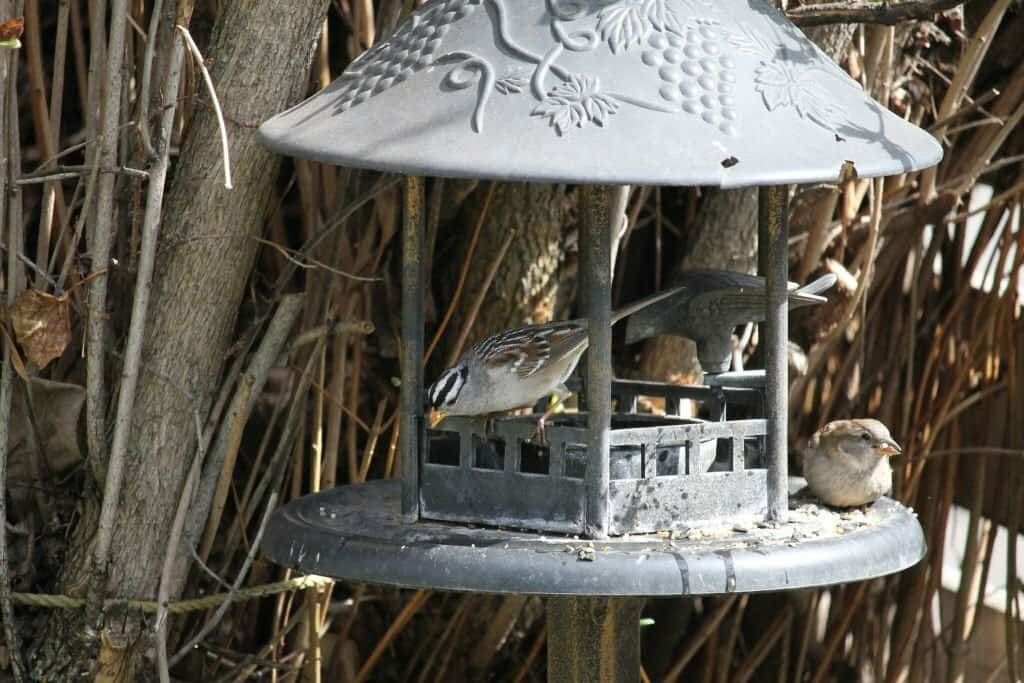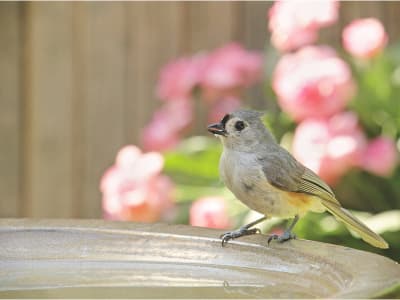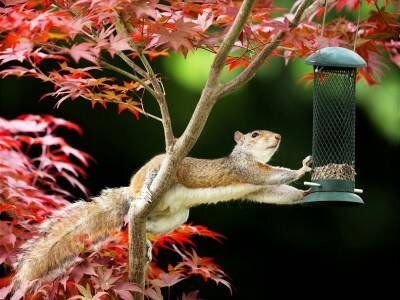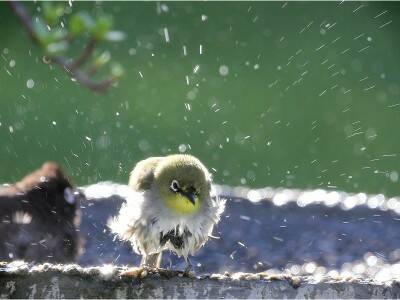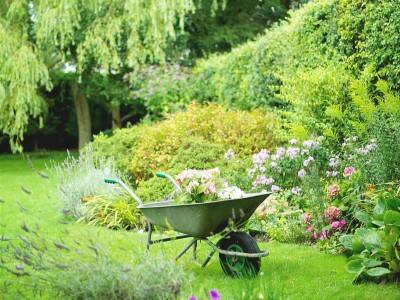To stop the mess under your bird feeders, consider using stones or pea gravel as ground cover to hide the seeds and hulls, adding a seed tray to prevent mess and attract a greater variety of birds, and using a hardware cloth or screen for easier cleanup. Additionally, regularly cleaning up seeds on the ground for long periods can help prevent the accumulation of droppings, mold, and other germs.
Maintaining a clean feeding station ensures the birds’ well-being and prevents unpleasant odors. Bird feeders attract a variety of animals, and without proper maintenance, it can lead to a smelly and unsightly mess. Cleanliness is crucial to maintain a healthy and inviting feeding area for the birds.
We will explore 15 effective ways to stop the mess under your bird feeders, ensuring a neat and inviting environment while promoting the well-being of the birds in your area.
Challenges With Mess Under Bird Feeders
Are you tired of the mess under your bird feeders? Discover 15 ways to keep the area clean and tidy. By using stones or pea gravel, adding a seed tray, or placing a hardware cloth or screen on the ground, you can keep the area beneath your bird feeders looking neater while ensuring a cleaner feeding environment for the birds.
Challenges With Mess Under Bird Feeders Bird feeders are a delightful addition to any garden, attracting many lovely and colorful birds. However, they can also lead to messy surroundings, presenting a few challenges for bird enthusiasts. Understanding the types of mess, the damaging effects, and the importance of cleanliness can help tackle this issue effectively.
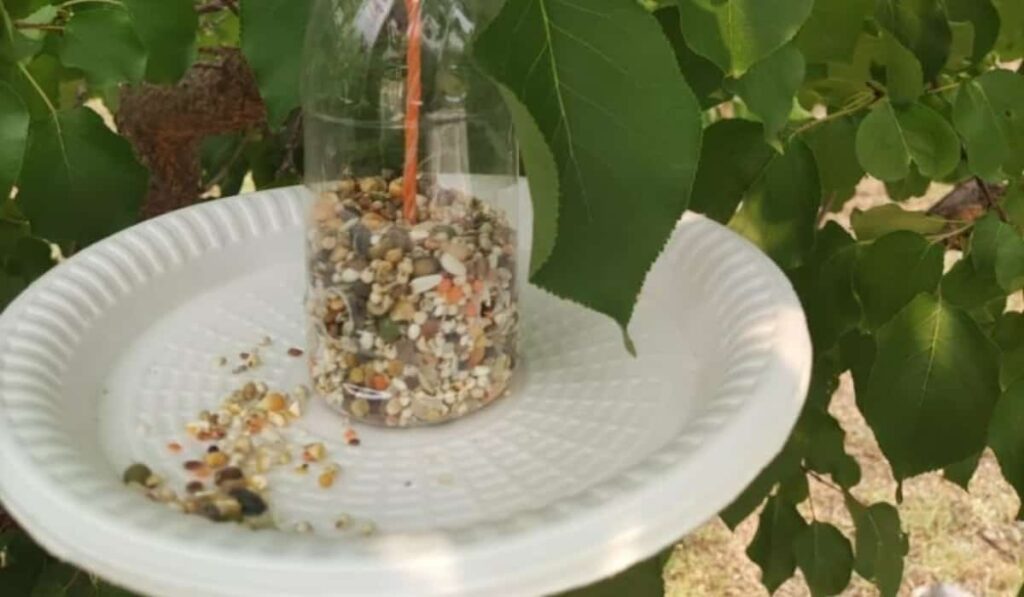

Types Of Mess
The mess under bird feeders can vary, including scattered seeds and hulls, bird droppings, and moldy debris. Additionally, fallen seeds and hulls can attract rodents and other pests, creating further mess and potential health hazards.
Damaging Effects
The accumulation of mess under bird feeders can harm the environment and the birds’ health. Moldy debris and stagnant water can create a breeding ground for bacteria, potentially causing harm to the birds and other wildlife. Furthermore, the mess can damage the garden’s aesthetics, making an unappealing and unkempt appearance.
Importance Of Cleanliness
Ensuring a clean environment around bird feeders is crucial for the health and well-being of the birds. Clean surroundings discourage the spread of diseases and parasites, promoting the overall welfare of the avian visitors. Additionally, maintaining cleanliness enhances the visual appeal of the garden, creating a welcoming and enjoyable space for both the birds and the observers. In addressing the challenges with mess under bird feeders, implementing effective cleaning practices and considering suitable ground cover options can significantly mitigate the chaos while providing a pleasant and inviting environment for the feathered guests.
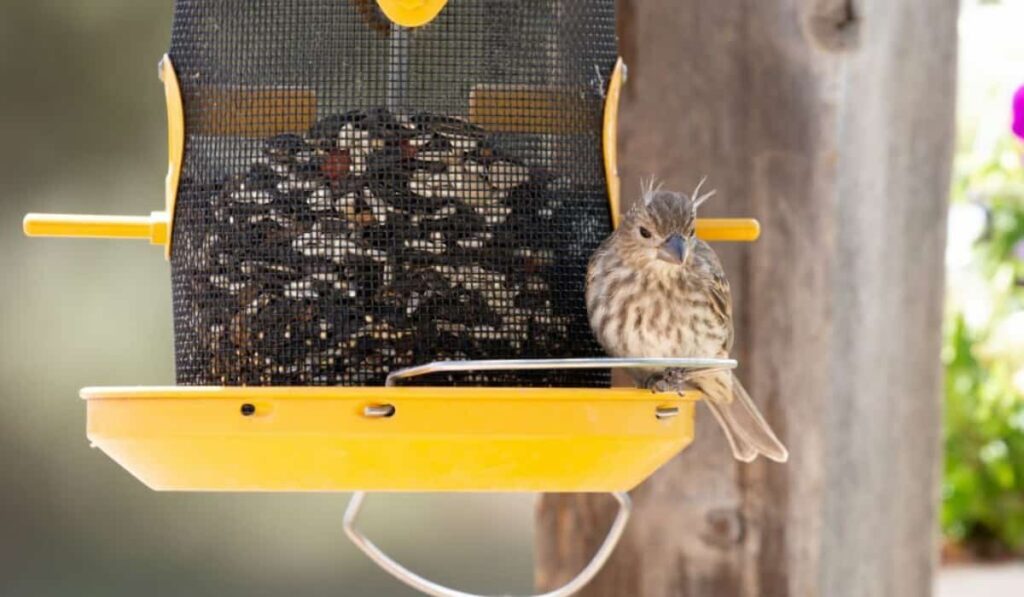

Seed Management Tips
Bird feeders can attract various bird species, providing an enjoyable experience for bird enthusiasts. However, managing the mess under bird feeders can be a challenge. Implementing effective seed management tips can help maintain a clean and organized feeding area while ensuring the well-being of the birds. Here are some suggestions for optimal seed management:
Optimal Seed Quantity
One key aspect of seed management is ensuring the optimal quantity of seeds in the feeders. Overfilling the feeders can lead to seed wastage and accumulation of excess seeds on the ground, attracting pests and causing a mess. On the other hand, underfilling the feeders may result in frequent refilling and potential scarcity for the birds. Maintaining a balance is essential by regularly monitoring and refilling the feeders with the appropriate amount of seeds.
Selecting The Right Type Of Seeds
The type of seeds used in the feeders can significantly impact the mess underneath. Opt for high-quality, clean seeds that are less likely to spoil quickly, reducing the chances of mold and bacterial growth. Additionally, choosing seeds that match the dietary preferences of the target bird species can minimize wastage and ground mess, as birds are more likely to consume the roots rather than scatter or discard them.
Alternative Seed Dispersal Methods
Implementing alternative methods for seed dispersal can help manage the mess under bird feeders. Consider utilizing seed trays or seed catchers attached to the feeder to minimize spillage and collect fallen seeds. Using platform or caged feeders with built-in seed catchers can also prevent roots from scattering on the ground, promoting a cleaner feeding area.
These seed management tips can contribute to maintaining a tidy and hygienic feeding environment while maximizing the enjoyment of bird watching.
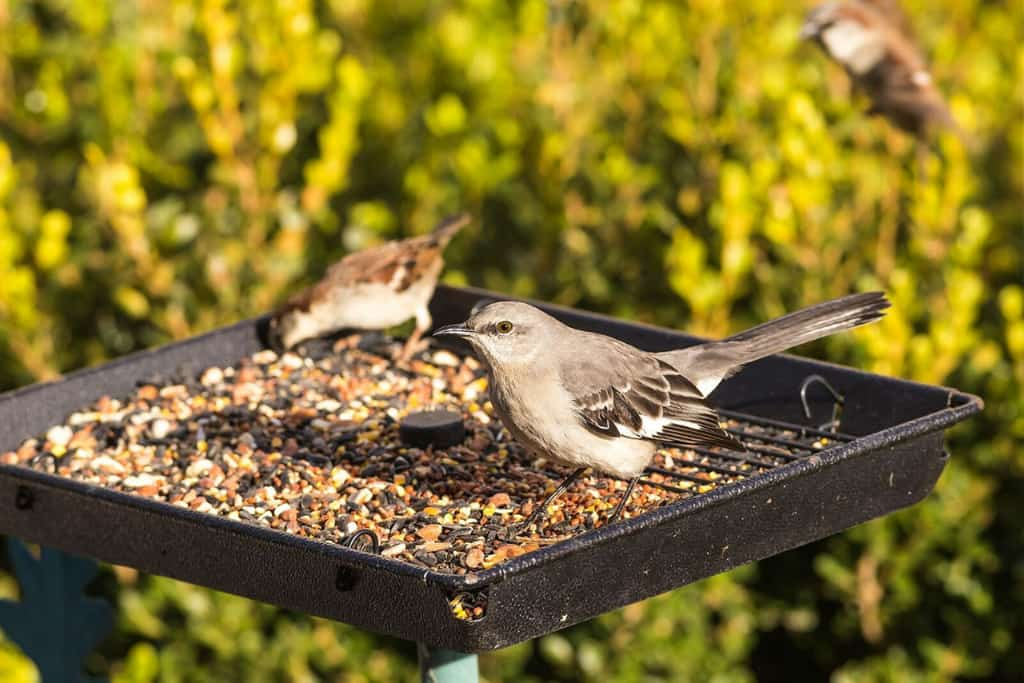

Feeder Placement Strategies
Strategic placement of bird feeders is crucial in minimizing the mess created underneath. By carefully considering location choices, suspension, and elevation techniques, and the impact of the surrounding landscape, you can significantly reduce the debris and bird waste around the feeders.
Strategic Location Choices
When selecting locations for bird feeders, consider placing them over surfaces that are easy to clean, such as gravel or mulch, instead of grass or concrete. Additionally, positioning feeders near natural bird habitats, like trees and shrubs, encourages natural perching and reduces ground spillage.
Suspension And Elevation Techniques
Elevating feeders on poles or using hanging mechanisms can limit access to larger ground-feeding birds and critters, reducing the amount of waste food on the ground. Consider installing baffles on the poles to prevent squirrels and other animals from reaching the feeders from below, further minimizing the mess.
Impact Of Surrounding Landscape
The surrounding landscape is also crucial in managing the mess under bird feeders. Placing feeders in open areas, away from thickets and dense brush, can reduce the hiding spots for small animals and discourage them from lingering around the feeders.
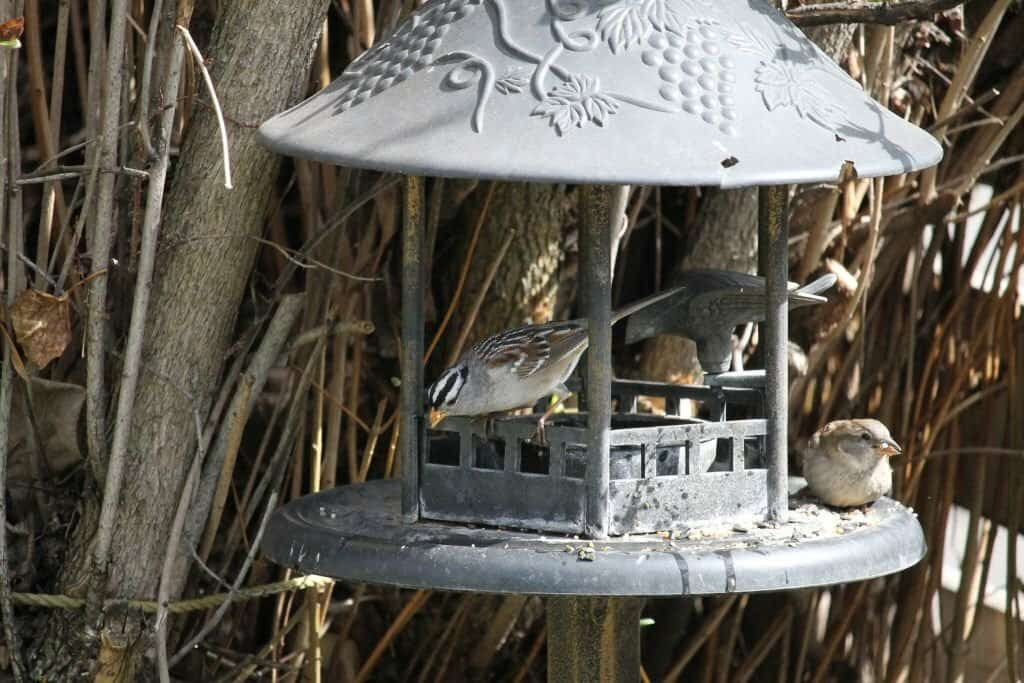

Innovative Feeder Designs
When it comes to maintaining a clean and mess-free space under your bird feeders, the right design can make all the difference. Discover 15 innovative feeder designs that incorporate smart features to control mess and waste, creating a hygienic feeding station for your feathered friends.
Mess-controlling Feeder Features
In the realm of bird feeders, selecting the right design is key to reducing the mess underneath. Check out these innovative features that significantly impact the cleanliness of the area around your bird feeders:
Seed-catching Trays
Some feeder designs come with built-in trays underneath the feeding ports, preventing spilled seeds and hulls from littering the ground.
Adjustable Perches
Feeders with adjustable perches allow only smaller birds to access the seed ports, reducing seed spillage caused by larger birds.
Weather Guards
Protective features like weather guards shield the feeding area from rain, snow, and wind, keeping seeds dry and minimizing waste.
Waste-ejecting Mechanisms
Certain feeder designs include mechanisms that automatically eject seed debris or allow for quick and easy cleaning, reducing mess accumulation.
Tray and Tube Feeder Alternatives
While tray and tube feeders are popular, they can contribute to mess if not designed properly. Explore these innovative alternatives to minimize mess and waste:
Mesh-bottomed Feeders
Featuring mesh or perforated bottoms, these feeders allow seed hulls and debris to fall through, keeping the feeding area cleaner.
Seed-catching Skirts
Some feeder designs include detachable skirts that surround the bottom, catching spilled seeds and preventing scattering on the ground.
Angled Perches
Feeders with angled perches discourage birds from flicking seeds out, maintaining a cleaner area underneath.
Waste-management Systems
Certain tube feeder alternatives incorporate systems that automatically remove or compact seed debris, reducing the need for frequent cleaning.
Squirrel-resistant Options
Squirrels can be a major source of mess and waste around bird feeders. Explore innovative feeder designs that offer effective squirrel resistance:
Weight-activated Feeders
Designed to close off feeding ports when a squirrel or other large animal tries to access the seeds, preventing mess.
Baffle-equipped Feeders
Built-in baffles or separate baffles installed underneath deter squirrels, minimizing mess and waste.
Multi-level Feeders
Some squirrel-resistant feeders have multiple perches and seed ports, allowing smaller birds access while preventing squirrels from causing a mess.
Secure Locking Mechanisms
Feeder designs with secure locking mechanisms make it difficult for squirrels to access seed compartments, keeping the feeding area cleaner.
Effective Cleaning Methods
Bird feeders are a great way to attract our feathered friends to our gardens, but they can also lead to quite a mess underneath them. Effective cleaning methods are essential for maintaining a clean and hygienic outdoor space while ensuring the health and safety of the birds. You can effectively stop the mess under your bird feeders by implementing regular maintenance routines and eco-friendly waste disposal practices.
Tools & Resources For Easy Cleanup
Utilizing the right tools and resources can make the cleanup process much more efficient. Here are some essential items you may need:
- Putty knife for scraping off old food from tray feeders
- Rake for gathering waste into a pile
- Wheelbarrow for transporting the trash to a compost pile
- Hose for washing away hulls and debris
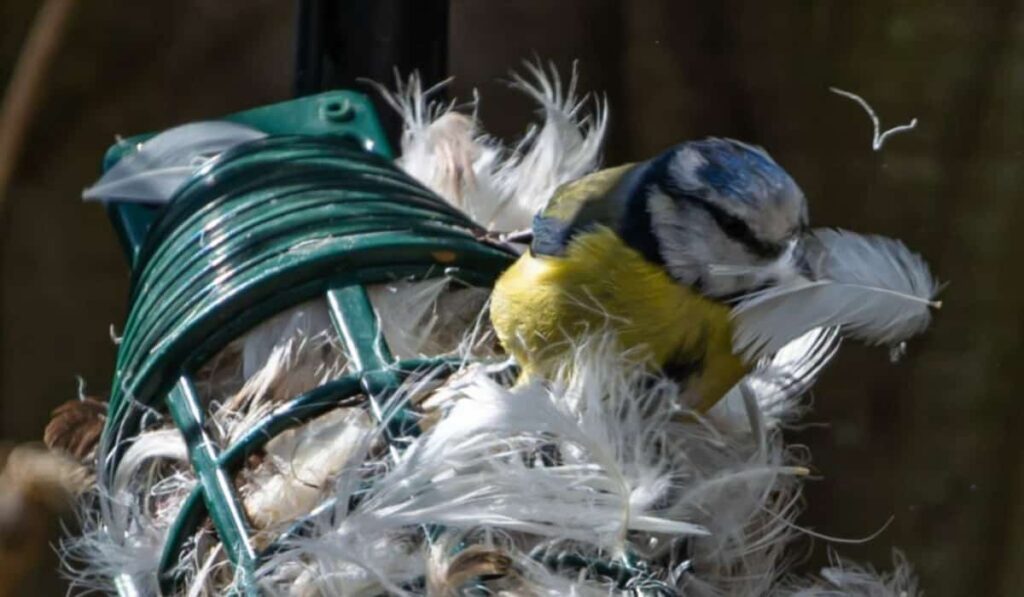

Regular Maintenance Routines
Regular cleaning and maintenance routines will help prevent waste buildup and ensure a tidy bird-feeding area. Here are some recommended maintenance practices:
- Scrape off old, excess food from the tray feeder located above
- Use a hardware cloth or screen placed on the ground below the feeders to allow for easier cleanup
- Regularly wash the area beneath the feeders with a hose to remove accumulated hulls and debris
Eco-friendly Waste Disposal Practices
Disposing waste in an eco-friendly manner is crucial for maintaining a sustainable outdoor environment. Here are some eco-friendly disposal practices:
- Add stones or pea gravel to the area beneath the feeders to collect seeds and hulls, making cleanup easier
- Ensure proper composting of the accumulated waste instead of simply discarding it
- Utilize non-toxic cleaning agents to wash the feeding area
Frequently Asked Questions For 15 Ways To Stop The Mess Under Your Bird Feeders
How Do You Keep The Area Under A Bird Feeder Clean?
To clean the area under a bird feeder, use a seed tray or add stones to collect seeds and hulls, preventing mess and weed growth. Regularly clean up discarded seeds to avoid mold and yuck. A hardware cloth underneath can aid in easier cleanups.
How Do I Stop Messing Under My Bird Feeder?
To stop the mess under your bird feeder, use stones or pea gravel as ground cover to collect seeds and hulls. Regularly hose the area to remove debris. You can also place a seed tray under the feeder to prevent mess and attract more birds.
What Can I Put Under My Bird Feeder To Keep Weeds Away?
Use a seed tray to collect spilled seeds to keep weeds away under your bird feeder. This helps attract more birds and prevents weeds from growing around the feeder. Adding stones or pea gravel can keep the area neater and make cleanup easier.
Will Birds Poop Under Bird Feeder?
Yes, birds will poop under bird feeders as they eat and produce droppings. Regular cleaning and adding a seed tray or ground cover can help maintain a neater feeding area. It’s natural for birds to excrete where they feed, and the droppings can provide nutrients for the surrounding grass.
Conclusion
To maintain a clean and hygienic bird-feeding environment, removing waste regularly and spilled seeds beneath the feeders is crucial. Proper cleaning and management of the feeding area prevent the accumulation of mold and pests and ensure the health and safety of the visiting birds.
Implementing these strategies will help you create a tidy and attractive space for the birds and your outdoor surroundings.

